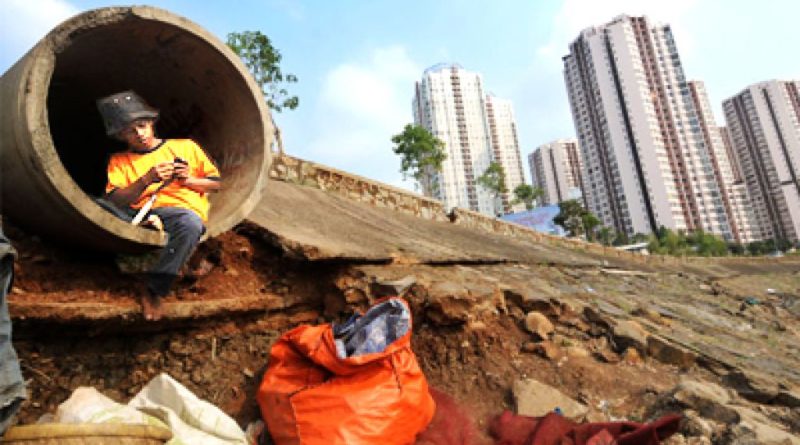ASEAN: Extreme poverty remains issue among vulnerable populations: WB
Among countries with high levels of extreme poverty, Laos needs to invest more in basic education and promote financial inclusion while strengthening social assistance and resilience to accelerate poverty reduction, the World Bank has said.
Laos and Papua New Guinea, both nations with a significant extent of remote upland areas, were among countries categorised in the ‘lagging progress’ group with high levels of extreme poverty in the region.
These countries can strive to reduce poverty more quickly by adopting the abovementioned approaches, the bank said in its new report entitled ‘Riding the Wave: An East Asian Miracle for the 21st Century’ that was published on the bank’s website on December 5.
It suggested that nations of the East Asia and Pacific need new policy approaches to achieve inclusive growth.
The report described Malaysia, and Thailand as ‘Progressive Prosperity’ countries that have largely eliminated extreme poverty and fostered a large middle class.
The countries are suggested to prioritise meeting the growing aspirations of the middle classes while mobilising and using resources to address remaining disparities.
China and Vietnam are categorised as ‘Out-of-poverty-into-prosperity’ countries with large swaths of their populations now economically secure or middle class.
These were suggested to address the aspirations of their middle classes as well as the needs of their vulnerable populations, while also preparing for the onset of rapid ageing.
Indonesia, the Philippines, and Cambodia, are described as ‘Out-of-extreme-poverty’ countries, which have low levels of extreme poverty but as yet a small middle class.
The countries can prioritise improving economic mobility and integrate social protection programmes.
Laos was among those reported to have persistently high levels of extreme poverty. This comes despite the government intensifying efforts to alleviate poverty as the nation strives to graduate from least developed country status by 2020.
The Lao government has set a target to reduce poor households to 5.67 percent of total families nationwide by 2018.
This will be achieved by increased economic activity targeting a high-level of economic growth, expected to achieve some 7 percent.
The World Bank’s report stated that the countries of developing East Asia and Pacific, among the most successful in the world in reducing poverty and improving living standards, need to adopt new thinking if they are to achieve inclusive growth going forward.
Growth that is inclusive, reducing poverty while providing upward mobility and economic security for all, will require countries to go beyond its successful “growth with equity” model.
Prospects for upward mobility are seen as increasingly elusive, reflecting a sense that income and wealth are becoming more concentrated while access to essential social services remains limited and often of poor quality.
Achieving economic security for all is more difficult, particularly as the region faces newer challenges including rapid ageing, less certain growth prospects, and greater urbanisation.
Inequality is a growing concern to citizens across the region.
The region has transformed from being comprised of mostly poor countries in the 1980s to a group of middle-income countries made up of varying economic classes.
By 2015, almost two-thirds of the region’s population were either economically secure or middle class, up from 20 percent in 2002.
“It’s a historic achievement that nearly a billion people in East Asia moved out of extreme poverty in just one generation,” said World Bank Vice President for East Asia and the Pacific, Victoria Kwakwa. “But for the region to sustain inclusive growth, countries will need to address the challenges of fully eliminating extreme poverty, enhancing the prospects for economic mobility, and assuring economic security for all.”
Policies for inclusive growth need to recognise and address the varying constraints faced by different economic classes.
Addressing the needs of the extreme poor requires easing of barriers to accessing economic opportunities, as well as sustained broad-based growth, to help them move up the income ladder.
Access to services such as healthcare and infrastructure, as well as mechanisms to manage risks, will need to be improved to help the economically vulnerable.
The priority for the economically secure and the middle class is to improve the provision and quality of public services, such as housing, water and sanitation.
The report suggests that three pillars can underpin the policy agenda.
Firstly, fostering economic mobility and closing gaps in access to jobs and services, improving the quality of jobs, and promoting financial inclusion.
Secondly, providing greater economic security, including bolstering social assistance systems, expanding social insurance, and increasing resilience to shocks. Finally, strengthening institutions, including progressive taxation policies to raise resources and improvements in the effectiveness of inclusive spending programs. Better management of rapid ageing and urbanisation, as well as enhancing competition, is expected to contribute.
Vientiane Times | By Times Reporters
(Latest Update December 11, 2017)
<>
NOTE : All photographs, news, editorials, opinions, information, data, others have been taken from the Internet ..aseanews.net | [email protected] |
For comments, Email to :
Aseanews.Net | [email protected] | Contributor









